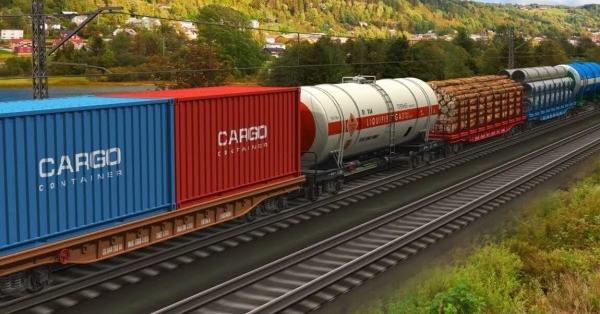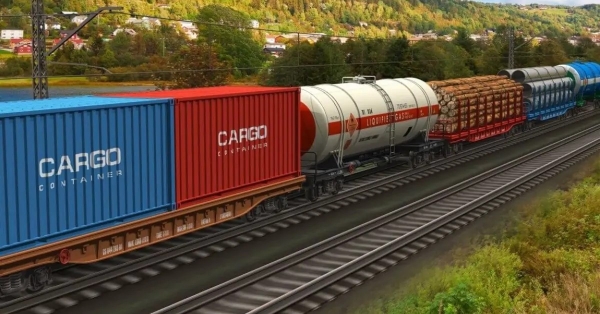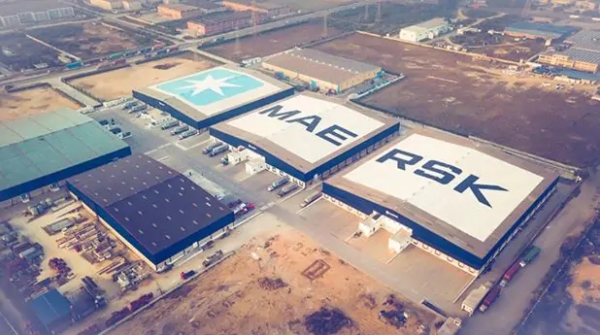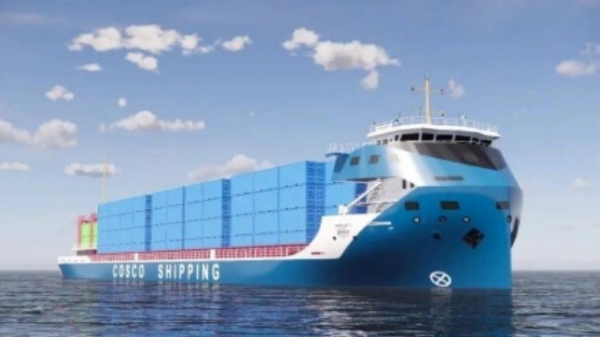News
Latest news
A.P. Moller – Maersk expands relationship with Microsoft to further digitize and decarbonize logistics
A.P. Moller – Maersk (Maersk), one of the world’s largest logistics companies, today announced a boost to its cloud-first technology approach by expanding the company’s use of Microsoft Azure as its cloud platform.
Azure provides Maersk access to a resilient and performing portfolio of cloud services, enabling its business to innovate and deliver scalable, reliable, and secure products with improved time to market. The cloud backbone enables Maersk to build scalable platforms to cater for organic and inorganic growth, supporting the Maersk transformation strategy. Further, the use of machine learning and data analytics will enable Maersk to gain greater insights and support new ways of working.
With the expansion of its relationship with Microsoft, Maersk is looking to accelerate its transformation and to further digitize logistics.
The collaboration between Maersk and Microsoft has already brought innovative digital solutions to the market, such as Remote Container Management (RCM), which allows Maersk to monitor temperature and humidity data from hundreds of thousands of refrigerated shipping containers in real time to ensure that food and other perishables arrive in perfect condition.
Another project, Connected Vessel, aims at optimizing fuel consumption by monitoring performance data from Maersk’s container vessels to create a shared view with experts onshore who can provide advice to Captains, helping lower bunker costs and reducing emissions.
Both projects are great examples of the benefit of how digitization is bringing real value for Maersk’s customers and their businesses, as well as the commitment to decarbonize logistics.
As part of Microsoft’s commitment to actively use and scale low-carbon solutions for global supply chain activities, Maersk is a key partner for Microsoft in air freight, ocean freight and domestic services, providing logistics services to Microsoft. The companies also recently extended their Airfreight collaboration where Maersk intends to utilize their own controlled freighter network to support Microsoft’s Global supply chain.
Furthermore, the companies intend to work together to strengthen their global strategic relationship across three core pillars: IT/technology, ocean & logistics and decarburization. The main objectives of this work are to identify and explore co-innovation opportunities and to drive digital innovation and decarburization in logistics. Maersk aims to develop state-of-the-art solutions to accelerate and modernize collaboration and processes and to further enable modern work experiences to create value for its customers and employees.
Iran Working On Improving Silk Road Connectivity
The railway will connect Bostanabad to Khavaran, which is a section of the greater Miyaneh-Bostanabad-Tabriz project that forms part of the southern route of the Silk Road.
A newly constructed rail line is set to be augmented this week. The railway will connect Bostanabad to Khavaran (near Tabriz), covering a distance of 44 kilometers. The section is part of the connection between Khavaran and Miyaneh, which is now as good as complete. The completion shortens the distance between Khavaran and Tehran by 4-5 hours, and is about 114 kilometers shorter than the road distance between the vital nodes.
The railway connection between Tabriz and Miyaneh has been a hurdle in western Iranian railway transportation for years. Until now, trains had to take a major detour (see map). As a result of this new railway connection, trains can connects between the cities directly. With this, Iran has got a faster domestic logistics channel from East to West.
Connecting to Turkey
The rail way line could even have more potential if the connection from Khavaran to Tabriz is completed, the last missing link. Amir Ashri, who works for the Iranian firm MAPNA Locomotive, explained that this Miyaneh-Bostanabad-Tabriz project still needs some final touches. The final section between Khavaran and Tabriz needs to be completed in the future. Once this line has been fully finalized, it will be part of the southern route of the Silk Road, says Ashri.
The southern route of the New Silk Road runs through Iran and Turkey instead of Kazakhstan and Russia. The railway link between Tabriz and Turkey is already there. If the railway link between Khavaran and Tabriz is completed, the Miyaneh-Bostanabad-Tabriz line is connected to Turkey.
Trans Asia Railways
Apart from being part of the southern route of the Silk Road, this railway is also considered as the southern route of the Trans Asia Railways (TAR). Initiated back in the 1950s, TAR envisions a gigantic rail connection between Singapore and Istanbul, extending over a length of 14,080 kilometers.
The southern corridor in TAR aims to create a rail connection over Turkey, Iran, Pakistan, India, Bangladesh, Myanmar, and Thailand, with extended railways running from China to Southeast Asian countries. In 2006, an extensive Intergovernmental Agreement on the Trans-Asian Railway Network was developed, involving 25 countries in the project, with a lengthy document illustrating the to-be-constructed railways for each country. This agreement encompasses almost all Central Asian countries, China and India, as well as some Republic of Korea and Iran, with the latest development such as China and Laos railway. Nevertheless, the development of this massive rail project has come in an expected slow fashion, if not far-fetched.
Gauge differences
Obstacles across those 25 countries are quite obvious, one of which is gauge differences. Roaming across the southern corridor of TAR, one could spot at least three types of gauges. Iran and Turkey use the standard gauge (1,435 mm), while India, Pakistan, Bangladesh, and Sri Lanka use the so-called Indian gauge (1,676 mm). Moreover, most of the countries in Southeast Asia employ the meter gauge (1,000 mm).
Thus, for a journey starting from Bangkok, if the cargo manages to transport all the way via rail to Istanbul, it will first have to change from meter gauge to Indian gauge (from Myanmar to Bangladesh), then switch to the standard gauge when it passes Pakistan and enters Iran.
Geopolitical situation On the other hand, the geopolitical situation also hinders rail development. As Ashri explained, with the ongoing US sanctions, Iran’s infrastructure is facing heavy investment blockage. Moreover, forwarders are still hesitant to opt for the route through Iran considering that they may be in breach of sanction rules. Therefore, the potential of both the southern route on the New Silk Road and the TAR remains to be seen.
The railway route from St. Petersburg to the shores of the Persian Gulf
The railway route is part of the INSTC, directly connecting the ports of the Baltic Sea with the Persian Gulf and the Indian Ocean.
The construction of the Astara-Rasht transport corridor indicates the realization of Russia’s historical aspirations, Iranian ‘Akharin Khabar’ writes. The project received not only economic, but also strategic importance.
The adviser to the ex-president of the Islamic Republic, Hamid Abu Talebi noted that the international project of the North-South transport corridor, of which the mentioned railway line became a part, was “the realization of the historical aspirations of Russia from the tsarist times”, and that this project is “a story more about politics and security than about economics and trade “.
The main purpose of the corridor was to directly connect the ports of the Baltic Sea with the Persian Gulf and the Indian Ocean, or to create the shortest “path from the Varangian to the Persians”, which was a chain of transcontinental trade routes from the times of Ancient Rus’ and the Arab Caliphate.
According to Abu-Talebi, the Rasht-Astara branch turned out to be the missing link of the railway route from St. Petersburg, through Moscow, to the very shores of the Persian Gulf. The first part of this project was fully implemented, however, only in Soviet times, through the construction of a railway line, completed by 1941, to the southern border of Soviet Azerbaijan with Iran, or to the Astara customs. The second link was to be the construction of a section to the Iranian city of Rasht, but the project was frozen during the Cold War.
Until now, the role of the shortest route was played by the route along the waters of the Caspian Sea, from Astrakhan and further, bypassing the territory of Central Asia, to the port of Chahbahar in southeastern Iran.
The final understanding of how exactly to complete the link of the routes of the North-South transport corridor came during the last visit of the head of the Iranian government to Moscow. Then it was finally decided that the route would be a chain of railroad tracks, while the goods would no longer have to wait for loading from the railroad to sea vessels and back, and the transit time for transporting goods would also be significantly reduced.
The significance of this route has increased even more since the start of Russia’s special military operation in Ukraine and the introduction of extensive Western sanctions against Russia, as well as after Finland’s entry into NATO.
Now the international transport corridor received the strategic importance. And in the same way, the section of the railway from Rasht to Astara acquired strategic importance.
Iran establishes new airport in Gonabad
A new airport has been launched in Iran’s remote east amid efforts to expand transportation infrastructure in the region.
A Thursday flight carrying Iran’s parliament speaker Mohammad Baqer Qalibaf and other senior government officials was the first to land in the airport in Gonabad, a city of nearly 50,000 people located some 230 kilometers from the Iranian border with Afghanistan.
The airport has been launched to boost economic activity in the region, according to a report by the official IRNA news agency which said that businesspeople in Gonabad and other cities in the region had to travel some 300 kilometers to reach the nearest airports in Iran’s east.
The project started some 30 years ago, said the report, adding that it accelerated in recent years amid Iran’s plans to complete a north-south transit corridor that passes through its east.
Gonabad is one of the key cities in Khorasan Razavi, an Iranian province where Iran’s second largest city of Mashhad is located.
Business activity in the region is expected to grow with the construction of a key railway from Mashhad to Zahedan near the border with Pakistan that passes via Gonabad. The railway will continue from Zahedan to Iran’s only ocean port of Chabahar on the Sea of Oman.
The government has spent some 35 trillion Rials ($75 million) on the construction of a first phase of the airport in Gonabad, said the report by the IRNA which added that investors had agreed to pay for charter flights to and from the airport in the next 10 months to help boost its traffic.
China’s April aluminum imports rise with domestic supply constrained
China’s aluminums imports in April rose 27.1% from a year earlier, customs data showed on Thursday, with domestic supply constrained by lingering power issues in the southwest.
The world’s biggest aluminums producer and consumer brought in 222,851 tones of unwrought aluminums and products – including primary metal and unwrought, alloyed aluminums – last month, according to data from the General Administration of Customs.
That compared to 175,289 tones imported in the same month of 2022 and 200,508 tones in March.
Imports in the first four months of the year totaled 797,602 tones, up 12.6% year-on-year, the data showed.
Domestic output in the southwestern province of Yunnan, China’s fourth-biggest producing province accounting for about 12% of the country’s total aluminums capacity, fell due to lower hydropower output.
“Rainfall…is still lower than levels in previous years,” analysts at Zijin Tianfeng Futures said in a report this week.
“Even if the situation improves to some degree, we do not expect to see a large-scale production resumption in the region in the short run.”
China’s April aluminum output rose just 0.8% from a year earlier, official data showed on Tuesday, with a 54.5% year-on-year jump in passenger vehicle sales partly driving the need for higher aluminum imports.
Imports of bauxite, a key raw material for aluminum products, totaled 12 million tones last month, the customs data showed.
That was down 0.4% from 12.05 million tones in March but up 7.7% from 11.13 million tones in April 2022.
Total imports climbed by 8.8% on the year to 47.64 million tones over January-April.
Source: Reuters (Reporting by Siyi Liu, Amy Lv and Dominique Patton
Maersk Opens Warehouse In Malaysia
Maersk and Barry Callebaut Group, manufacturer of chocolate and cocoa products, have entered into a long-term partnership to build and operate a warehousing and dispatching facility in Malaysia.
Maersk and Barry Callebaut Group, manufacturer of high-quality chocolate and cocoa products, have entered into a long-term partnership to build and operate a new Built-To-Suit cocoa bean warehousing and dispatching facility in Malaysia.
A ground-breaking ceremony of this dedicated facility was held in Pasir Gudang, Malaysia on 18 May, 2023.
Located in the Johor Bahru district, the main industrial zone in the city of Pasir Gudang close to the Johor port, this new multi-storey facility is one of the largest cocoa bean warehouses in Southeast Asia.
It spans across more than 45.451 m² and has a fit-for-purpose design with operational efficiency as a priority. It is also at a 1-kilometre distance from Barry Callebaut’s cocoa processing factory in Pasir Gudang, Malaysia.
According to Maersk, this warehouse supports Barry Callebaut’s strategic growth to continuously provide high quality cocoa and chocolate products and services to their customers in Malaysia and Asia Pacific region. “The new warehouse allows us to have better control over our cocoa bean qualities and this ultimately supports our ambitious growth plans in the region,” Elie Fouché, vice-president Cocoa for Region Asia Pacific at Barry Callebaut.
Turkey Reports Progress on Freeing Ships Blockaded by Russia
In two days of diplomatic talks with Russia and Ukraine last week, Turkish diplomats made progress towards an agreement to release all Turkish cargo ships from Ukraine, where about five dozen foreign vessels have been trapped by a Russian naval blockade for the past 15 months. The agreement would require a guarantee from Russian forces not to fire on foreign ships as they depart.
"The parties expressed their positive approach regarding the coordination of the return of our merchant ships and their crews, which were stranded in Ukrainian ports due to the conflict conditions," said the Turkish Foreign Ministry in a statement.
All going well, the release of Turkish vessels could pave the way for the departure of other stranded foreign ships. The initial operation "will serve as a model for the evacuation of ships from other countries" that have been stranded in Ukraine due to the Russian invasion.
It is unclear whether the deal would include the recovery of the foreign vessels seized by Russian-backed proxy forces at Mariupol in June and July 2022.
The Turkish foreign ministry also expressed optimism on the prospects for renewing the Black Sea Grain Initiative, the Turkish/UN brokered deal that secured a Russian nonaggression guarantee for bulkers heading to three designated grain ports in Ukraine. Despite formal participation, Russia has impeded the agreement's function on multiple occasions, including slowing inspections and blocking the nomination of new vessels to the program, and has repeatedly threatened to withdraw if its demands are not met.
The initiative's latest renewal cycle expires this coming Thursday, and in recent weeks, Russian agreement on an extension appeared to be uncertain. However, Russian state media reported Friday that the deal will be extended by another 60 days while talks continue. According to the Turkish foreign ministry, the parties are "heading towards an agreement on the extension of the grain deal."
A de facto Russian blockade of all container, ro/ro, wet bulk and breakbulk traffic to Ukraine's Black Sea ports remains in effect.
Construction Underway on COSCO’s Electric-Powered Containerships
China’s COSCO Shipping reports that it is making progress on its plans to launch its first electric-powered containerships on the Yangtze. Construction for the two vessels is now underway for the project that was first announced in March 2022. The ships are expected to begin service in late 2023.
The two ships are each reported to be 10,000 tons and designed to sail a route between the river and the sea stretching more than 600 miles. Each ship will be 393 feet in length with a beam of approximately 77.5 feet. They will have a design draft of 18 feet to provide good maneuverability along the Yangtze with a carrying capacity of up to 700 TEU. COSCO is billing the ships are the largest electric containerships in the world.
Each of the ships will be powered by two 900 kW main propulsion motors. When the project was unveiled last year, COSCO said the ships will use containerized batteries the size of a 20-foot container with a capacity of 50,000 kWh. These batteries will be charged onshore with COSCO envisioning a network of charging stations and depots to exchange the batteries along the river. In March 2023. COSCO reported that it had completed commissioning for elements of the power system making a key step toward the deployment.

First steel for the vessels was cut at the COSCO Shipping Heavy Industries shipyard in December. Assembly for the second of the vessels began on May 8 at the shipyard. When deployed, COSCO says they will save the equivalent of 32 tons of CO2 emissions every 24 hours.
A total of 51 organizations are contributing to the project which also includes Panasia Shipping in addition to COSCO. The Wuhan Institute of Standards, Chengrui Power, and Lloyd’s Register are among the organizations involved in the effort.
Last year, China launched the largest electric river cruise ship, which is operating in the area around the Three Gorges Dam and the first phase of an electrification project first proposed in 2018. The Chinese Ministry of Industry and Information Technology and the Ministry of Transportation jointly funded the project which is part of a broader effort aimed at electrification of the Yangtze River region.
In addition to the electric propulsion system, COSCO reports the ships will be equipped with an intelligent ship platform system and advanced situational awareness system. The application of the two systems they report will greatly improve the intelligence and safety of the ship.
Hapag-Lloyd concludes acquisition of Indian terminal operator stake
Container line Hapag-Lloyd has completed its acquisition of 40% shareholding in J M Baxi Ports & Logistics Limited (JMBPL) previously approved by antitrust authorities.
The acquisition deal was inked in January 2023 when Hapag-Lloyd had made an agreement with an affiliate of Bain Capital Private Equity, which held a 35% stake in JMBPL, and the Kotak family, which holds most of the shares of JMBPL.
“By acquiring a stake in JMBPL, Hapag-Lloyd is strengthening its presence in the attractive growth market of India while expanding its terminal and infrastructure business at the same time,” Hapag Lloyd said.
The contracting parties agreed to not disclose any financial details of the deal. The move is part of Hapag-Lloyd’s Strategy 2023 of expanding its involvement in the terminal sector.
Hapag Lloyd recently also acquired the terminal business of Chile-based SAAM. It also holds stakes in the Italy-based Spinelli Group, Container Terminal Wilhelmshaven, the Container Terminal Altenwerder in Hamburg, Terminal TC3 in Tangier, and Terminal 2 in Damietta, Egypt, which is currently under construction.
The German company is said to have started working on its strategy for 2030, expected to be completed in the upcoming few months.






























